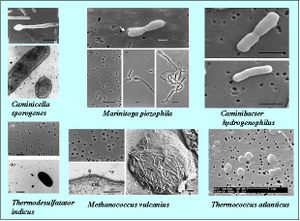Moraxella catarrhalis: Difference between revisions
| Line 35: | Line 35: | ||
==References== | ==References== | ||
[1] | [1] Bakri F, Brauer AL, Sethi S, Murphy TF. Systemic and mucosal antibody response to Moraxella catarrhalis following exacerbations of chronic obstructive pulmonary disease. J Infect Dis 2002;185:632-40. | ||
[2] Nicotra B, Rivera M, Luman JI, Wallace RJ.Branhamella catarrhalis as a lower respiratory tract pathogen in patients with chronic lung disease. Arch Intern Med1986;146:890-3. | |||
[3] Tolentino LF. Causes of Moraxella catarrhalis pathogenicity: review of literature and hospital epidemiology. Laboratory Medicine 2007;38:420-1. | |||
==Author== | ==Author== | ||
Revision as of 15:17, 22 July 2013
Classification
Kingdom: Bacteria Phylum: Proteobacteria Class: Gammaproteobacteria Order: Pseudomonadales Family: Moraxellaceae Genus: Moraxella Species: M. catarrhalis
http://www.ncbi.nlm.nih.gov/Taxonomy/Browser/wwwtax.cgi?mode=Info&id=480&lvl=3&lin=f&keep=1&srchmode=1&unlock [1]
Moraxella catarrhalis
Description and Significance
Characteristics: - non-motile - gram-positive - diplococcus - aerobic - oxidase-positive - sticks to host cell using a trimeric autotransported adhesion (TAA) - commonly resistant to penicillin, ampicillin, and amoxicillin -
Structure, Metabolism, and Life Cycle
Interesting features of its structure; how it gains energy (how it replicates, if virus); what important molecules it produces (if any), does it have an interesting life cycle?
Ecology and Pathogenesis
Moraxella catarrhalis is specifically a human pathogen and it can cause infection in immunocompromised hosts, such as HIV/AIDS patients. Also, it can colonize the upper respiratory tract in children and infants more easily than adults and cause pneumonia and sinusitis. Moraxella catarrhalis enters the nasopharynx and can invade numerous cell types, including bronchial epithelium, small airway epithelium, and type II alveolar pneumocytes. It can migrate to the middle ear after it enters the nasopharnyx. It forms a biofilm in vitro, but it is not clear what the function of this biofilm is. The patient will experience symptoms of acute sinusitis, urethritis, septiciema, meningitis, maxillary sinusitis, conjunctivitis, and septic arthritis. Thie infection will cause exacerbation of chronic lung conditions.
References
[1] Bakri F, Brauer AL, Sethi S, Murphy TF. Systemic and mucosal antibody response to Moraxella catarrhalis following exacerbations of chronic obstructive pulmonary disease. J Infect Dis 2002;185:632-40. [2] Nicotra B, Rivera M, Luman JI, Wallace RJ.Branhamella catarrhalis as a lower respiratory tract pathogen in patients with chronic lung disease. Arch Intern Med1986;146:890-3. [3] Tolentino LF. Causes of Moraxella catarrhalis pathogenicity: review of literature and hospital epidemiology. Laboratory Medicine 2007;38:420-1.
Author
Page authored by Aaron Yeshe, student of Mandy Brosnahan, Instructor at the University of Minnesota-Twin Cities, MICB 3301/3303: Biology of Microorganisms.

